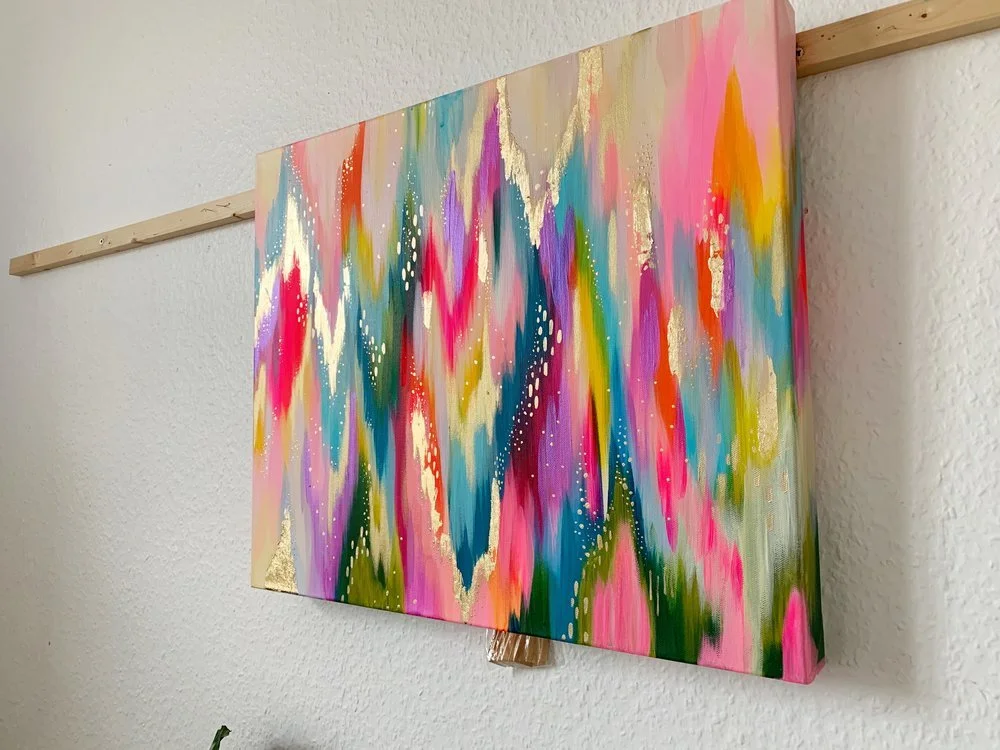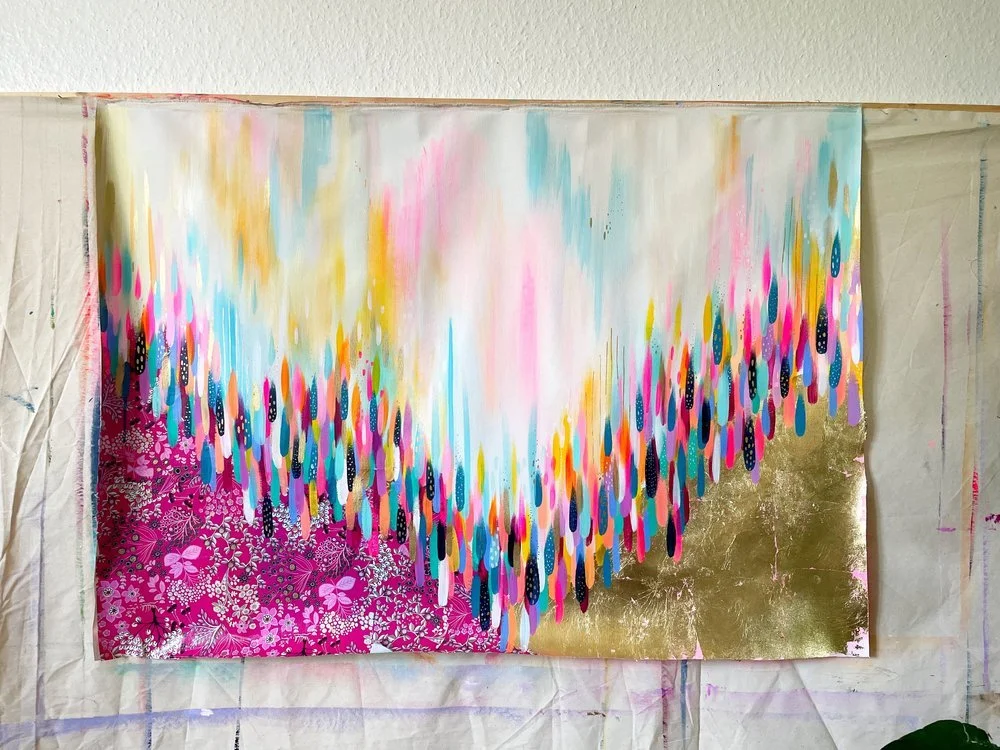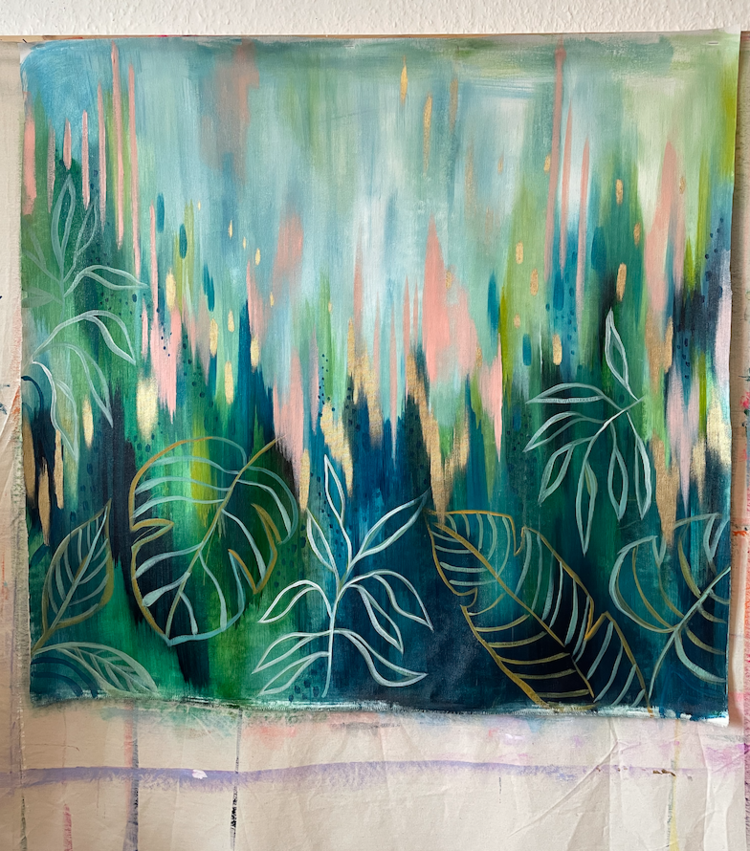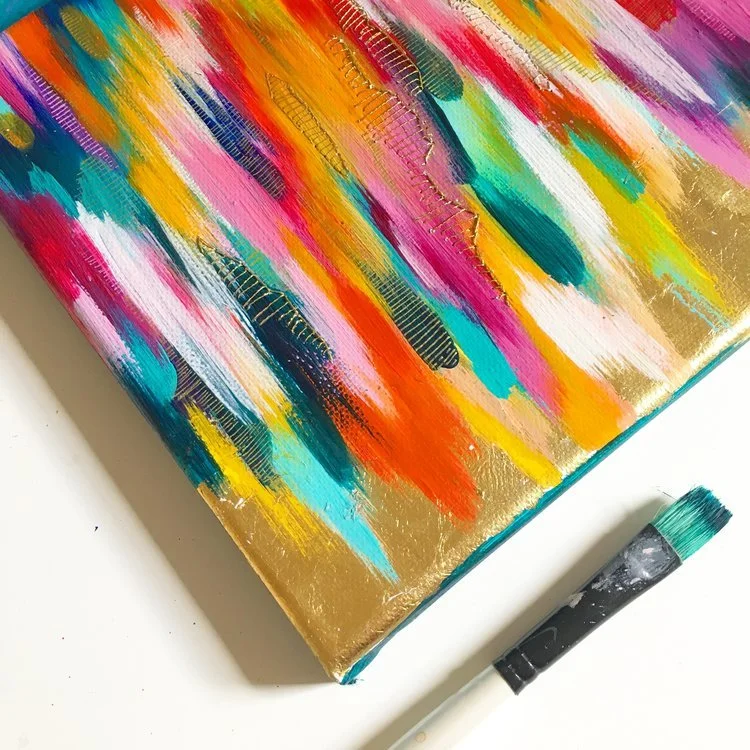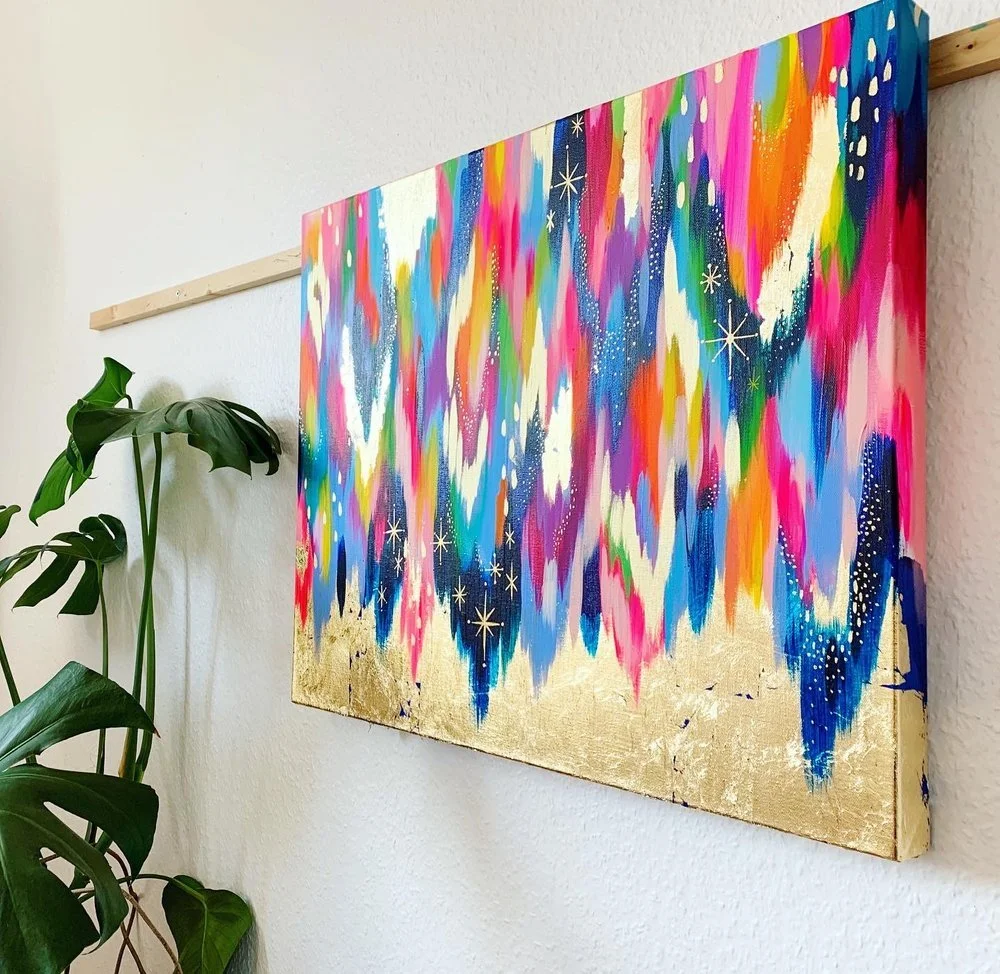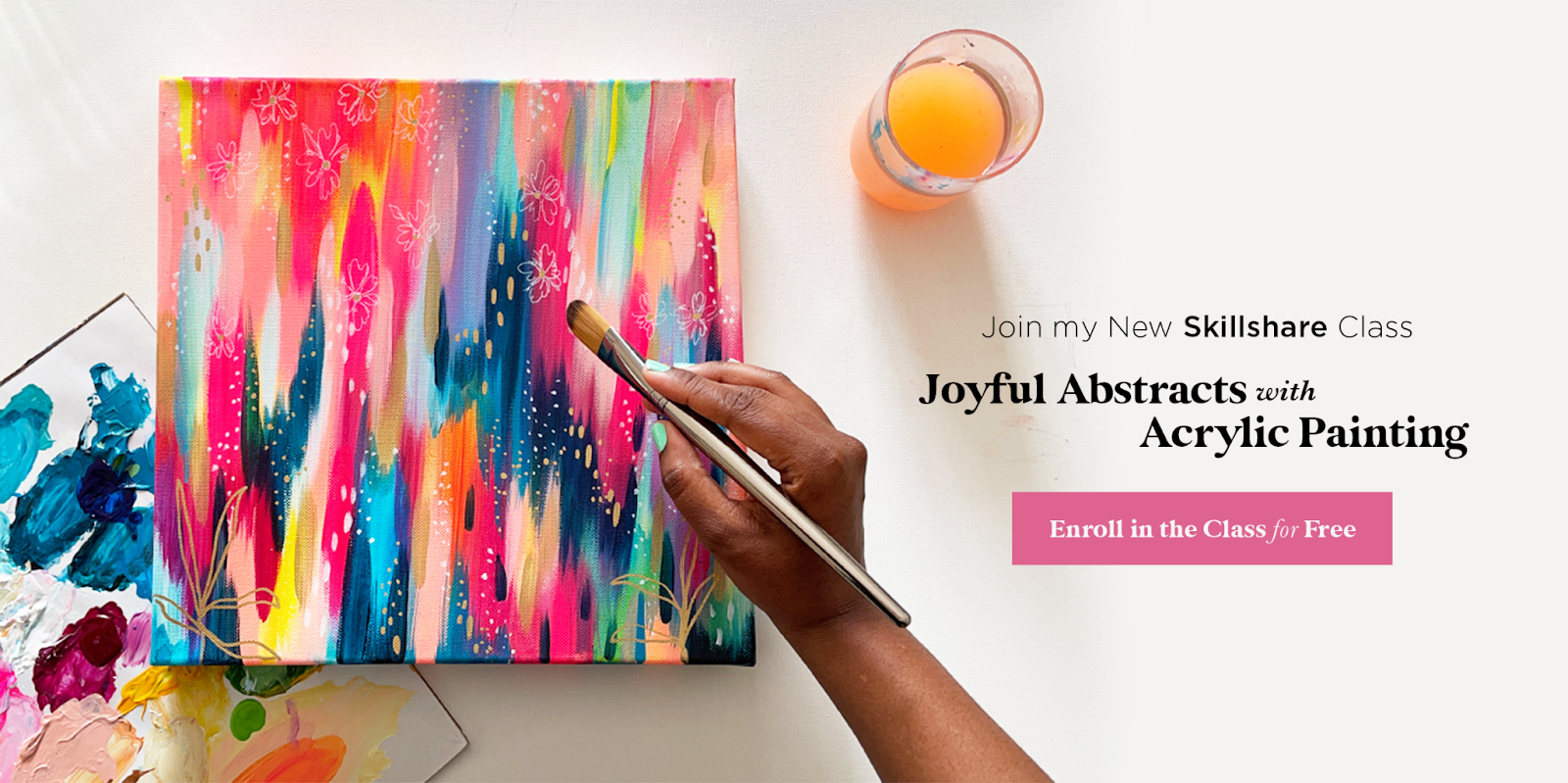How and When to Paint the Edges of an Acrylic Painting
Let’s talk about an often overlooked portion of the acrylic painting process - painting the edges of each piece! Today I’ll share how I paint the edges of my acrylic paintings, different methods for painting edges, and the benefits of painting the edges of your canvas paintings.
First, here’s my take on painting the edges of canvas paintings. As an abstract artist, I almost always continue my painting so that it moves seamlessly onto the edge of the stretched canvas. I find that this gives me maximum flexibility. When I send my paintings off to my collectors, they can choose to display the canvas as a standalone piece or frame it so that the edges are covered. I find that most collectors are happy to display their pieces unframed which is why I make sure to continue to the painting all the way over the edge.
I tend to paint on un-stretched canvas. This makes it even easier for me to continue my painting over the edges of the frame. When I paint on un-stretched canvas, I just make sure to paint a little “outside the lines” of the intended size. This ensures that there is plenty of room to wrap the canvas and make sure that the edges are completely covered with color when it gets sent to the collector.
Edge-Painting Methods
Carry the Painting to the Edges
As I mentioned, I prefer to continue the painting onto the edges of the piece. If you’re painting on a canvas that is already stretched on a wooden frame, you’ll need to make sure that you don’t forget about the edges as you’re painting. It’s easy to get stuck in the flow of painting and forget about the edges entirely. But it will be much easier to continue your painting onto the edge if you’re covering the edges as you go.
If you are painting on an unstretched canvas, make sure to make the painting at least a few inches larger than the intended final stretched size. This method really helps keep you in the flow of things since you can keep painting in a continuous motion without having to switch angles.
Add Fun Details
In abstract painting (and even in realism) it can be fun to paint something different on the edges of your canvases. I especially love this method when I’m working on canvases with very wide edges. It helps give the painting some extra uniqueness and flair!
Experiment with adding a pattern or other fun details to the edges for an extra pop of interest!
Simple One-Color Painted Edges
If you want to keep things simple, you can always paint your edges after the main piece is complete. This is much easier on pre-stretched canvas. It is very hard to define exactly how a piece will be stretched and what parts of the painting will end up constituting the edge when painting on an unstretched canvas.
Choose a solid color that pairs well with the color palette of your piece. Then, carefully paint the edges in that color. Note that it may take a few coats to achieve full coverage.
This is a great option if you forgot to continue your painting to the edge or if you have some stray marks that you want to make more uniform. Just be very careful to not paint over any of your beautiful finished work. This is a great practice in mindfulness. Enjoy slowing down and putting brush to canvas!
Benefits of Painted Edges
There are a few reasons that you should consider painting the edges of your paintings. One is that it simply looks more professional. Your collectors will feel like they have a truly finished piece that they’ll be able to proudly display in their home. It also means that the painting can be hung without a frame.
Overall, I would recommend painting the edges of your canvas to keep a sense of cohesion and professionalism in your artwork. Happy painting!
xo,
Jessi
Want to dive deeper into abstract painting?
Join me in my Skillshare class, Joyful Abstracts with Acrylic Painting! In this class I share my step-by-step painting process. I’d love for you to join me and create your own Joyful Abstract! If you’re new to Skillshare you can enroll in the class for free! Plus you’ll get a free month trial of Skillshare so you can check out all of the amazing creative classes on the platform.
Pin this post for later! 📌
Hover or tap on this image and click the “Save” button on the top left!

